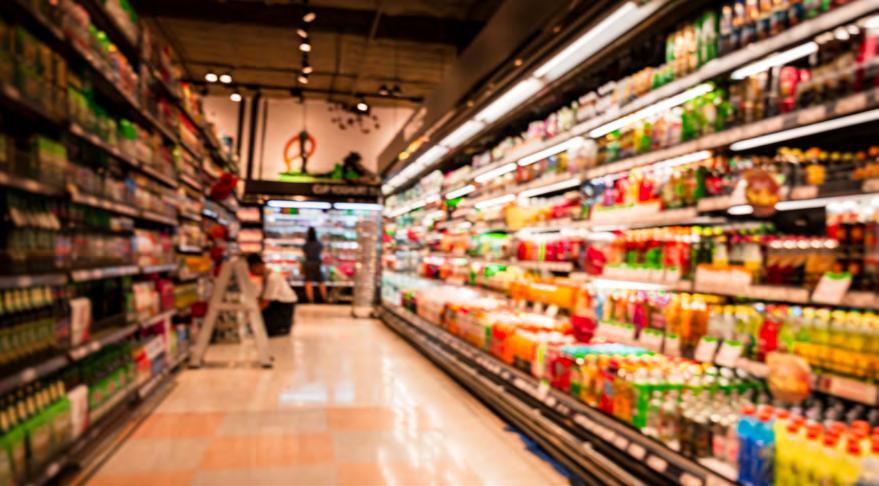
3 minute read
COMPLEXITIES
MANAGING THE LOGISTICS OF SHORT SHELF-LIFE GOODS
Dr Shereen Nassar, Global Director of Logistics Studies and Director of MSc Logistics and Supply Chain Management Suite at
Heriot-Watt
University Dubai, pens down her thoughts
The rise in urban population, evolving food consumption habits, and increased trade globalisation have complicated and prolonged food supply chains. To tackle the issue of food loss at every stage of the supply chain, there is a need to shift from a traditional approach to an integrated one. Implementing practical, affordable, and eco-friendly processing technologies, employing appropriate storage, and packaging solutions, enhancing road infrastructure and market linkages, as well as providing training and education to all participants in the supply chain, including customers, are some of the successful measures that can enhance the chain’s efficiency and decrease food waste and loss.
Dr Shereen Nassar, Global Director of Logistics Studies and Director of MSc Logistics and Supply Chain Management Suite at Heriot-Watt
University Dubai share insights on the complexities of managing logistics for perishable goods and the role of technology in better composing shelf-life food products.
The management of perishable products during shipping is a task that requires a higher level of precision than conventional retail supply chain management, as the products must be transported and stored in a strictly regulated environment. Perishable goods, such as food items, pharmaceuticals, and other temperature-sensitive products, have a limited shelf life and are highly susceptible to spoilage. According to a 2019 report by the Food and Agriculture Organisation of the United Nations (FAO), around 33 per cent of all food products, with an astonishing 45 per cent of fresh produce, are lost or wasted due to noncompliance with temperature limits during harvesting, packaging, transportation, or trade.
The challenges of managing perishable goods start at the source, where farmers and producers must ensure that their products are harvested, processed, and packaged correctly to preserve their quality. Once these products are ready for shipment, they must be transported to their destination quickly and efficiently while maintaining the optimal temperature and humidity conditions.
One of the biggest challenges in managing perishable goods is maintaining the cold chain, the temperature-controlled supply chain that ensures the quality and safety of perishable goods. It starts at the source, where the products are harvested or manufactured and continue through transportation, warehousing, and distribution. Any break in the cold chain can result in spoilage, leading to significant losses for the producer and supplier.
Managing the inventory is another critical challenge in handling perishable goods. Since these products have a limited shelf life, it is essential to address the inventory carefully to avoid overstocking or understocking. Overstocking can lead to spoilage while understocking can result in lost sales and dissatisfied customers. To manage the inventory effectively, companies must have accurate demand forecasting, efficient storage and retrieval systems, and effective monitoring of product expiry dates.
The increased use of technology in the food supply system has improved perishable food safety and quality. Different technolo- gies can be integrated into the food supply system to mitigate risks, maximise efficiency, and manage complexities. Moreover, modern technologies have become more user-friendly and are used for different activities in the food supply chain, such as planting, harvesting, preparation, processing, packaging, transportation, and inventory management. RadioFrequency Identification (RFID) and smart labels have been considered easy methods for implementation in current packaging formats.

For instance, RFID (radiofrequency identification) tags can be used to track the location and temperature of products throughout the supply chain. This technology enables companies to monitor the product’s condition in real-time and quickly respond to any issues. Smart packaging is another significant advancement in the food production system, which helps maintain product quality throughout the supply chain and can extend the shelf life of perishable products.
Similarly, temperaturecontrolled containers, refrigerated trucks, and other specialised equipment have made transporting and storing perishable goods easier. Furthermore, the data collected from these devices can be integrated into the company’s logistics management system to provide real-time visibility and transparency to stakeholders. This can help the logistics team to proactively identify potential issues and take preventative measures to avoid delays or damage to the perishable goods. The use of blockchain technology is another example of establishing a secure and transparent supply chain. With blockchain technology, it is possible to track the entire supply chain process, from the origin to the destination, guaranteeing that perishable goods are appropriately handled during transit. The technology offers an unalterable account of each stage in the supply chain, which includes recording the temperature and humidity levels during transportation and storage. Managing the logistics complexities of perishable goods requires careful planning, coordination, and execution. Companies must maintain the cold chain throughout the supply chain, manage the inventory effectively, and leverage technology to improve visibility and control over the process. By addressing these challenges, companies can ensure the quality and safety of their products, minimise losses, and increase customer satisfaction. Also, Innovation in the supply chain continues to develop as academics and scholars continuously study and evolve the processes based on the feedback received from the industry.











